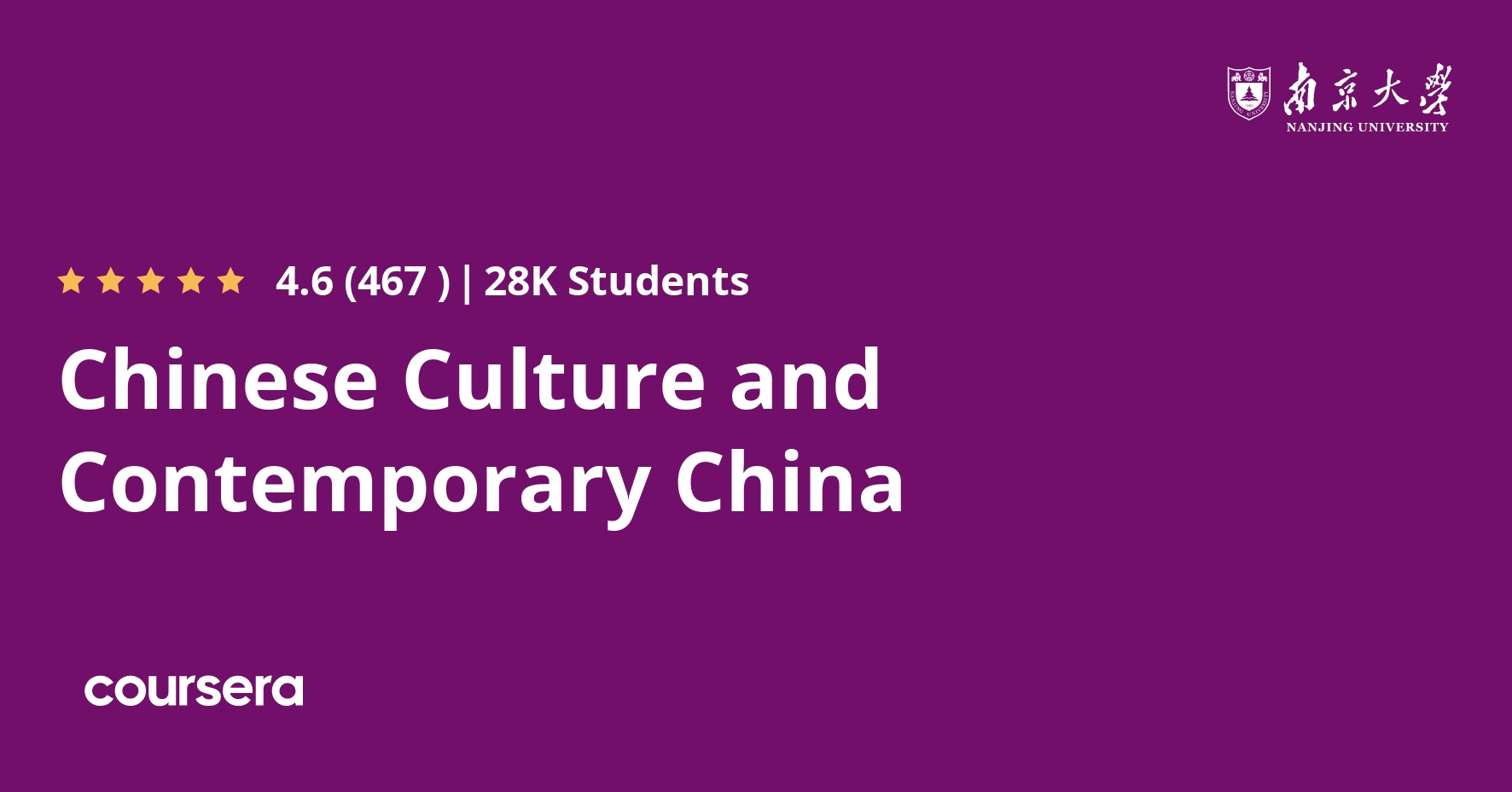Description
This course of Chinese Culture and Contemporary China will explore the foundations of Chinese civilization and the dimensions of Chinese culture. It will pay particular attention to the relationship between Chinese culture and the present-day life of the Chinese people and to the different elements of the culture which are under the present social structures, belief systems, literature, arts, customs, etc. The course aims at providing students with a deeper knowledge of Chinese culture, thus enabling them to better understand China.
The course will cover the following main areas of topics: (1) the foundations of Chinese civilization: its geography, language, and history; (2) the core concepts in Chinese philosophies and religions: Confucianism, Taoism, and Buddhism; (3), literature and arts, including Chinese calligraphy, painting, Tang poetry, and classical fiction; (4) society and life, including education, the role of women, Chinese food, and traditional holidays; (5) travel and landscapes, including well-known Chinese cities, mountains, ethnic regions and customs; (6) Chinese media, culture and sports, including TV and movies, fashion, Chinese gongfu and taiji.
In addition, students will be expected to participate in a buddy program beyond curriculum if they have a chance to come to Nanjing. Ideally they will be paired up: an international student with a Nanjing University student to allow students to learn firsthand about Chinese customs, culture, and language. Students will be required to complete various projects and homework assignments as well, which will encourage them to use Nanjing University and the city of Nanjing as a laboratory to apply what they learn during their stay at Nanjing University.
What you will learn
Essentials of Chinese Confucian Thought
Confucian culture is the cornerstone of traditional Chinese culture. In this segment, we introduce the three basic concepts of Confucian culture: Li or ritual etiquette, Ren or benevolence, and Tao. In the Confucian view, the variety of practiced rituals maintains the balance of society. Benevolence is the core of the ritual because only with benevolence one can truly observe li. Tao is the natural laws or order of the universe. One has to research the objective universe genuinely, to find those natural laws, and then use what was found to structure the human world. All these elements make the benevolence great.
Essentials of Chinese Painting
In this unit, we introduce the world of Chinese painting, which is one of the oldest continuous artistic traditions in the world. We discuss three important features that make Chinese art of painting unique and different from the Western painting. We also analyze the possible philosophical reasons lying behind that difference. By the end of the unit, one will know things like why Chinese paintings are usually not framed and without many colors, or why Chinese people when drawing might prefer having more than one artistic perspective, as well as other aspects of Chinese art.
Essentials of Chinese Music
This unit mainly focuses on three topics of Chinese music culture which are the origin and essence of the Chinese musical style, Confucian effect on the understanding of traditional Chinese music and Contemporary Chinese music development under the influence of western music. It is hoped that after completing this unit, students could feel and realize the uniqueness of Chinese traditional music, and have an overall understanding of the development of Chinese music culture.
Essentials of Chinese Costume
With a large variety of clothes and accessories, from the dragon robe of emperor to the humble clothes of common people, Chinese traditional costumes show the beauty of the material world. It’s also related to the social classes, feudal ethics and traditional philosophies. This unit centers on three major questions, trying to show specific details of the splendid costumes as well as explaining the cultural implication, such as the ranks of imperial court, the customs of weddings and funerals, the gender issue in Tang dynasty, etc.





